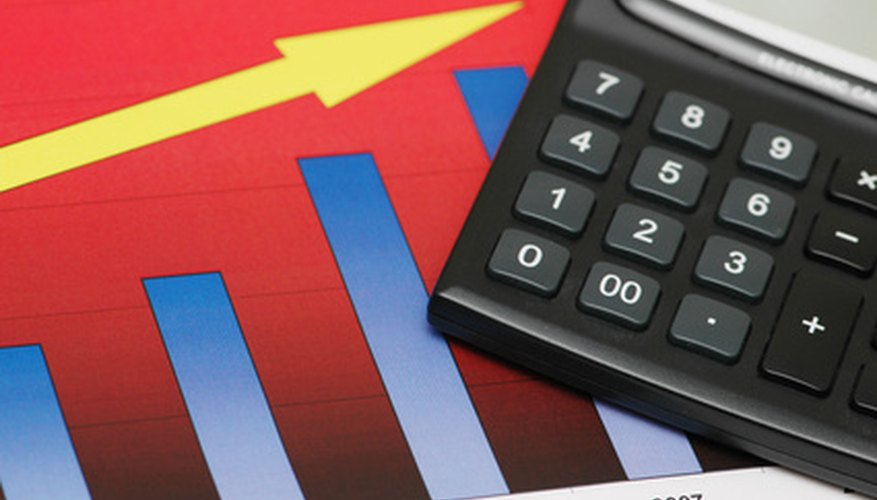Average increase refers to the average rate of growth that a variable is experiencing within a given time period. The math and theory behind average increase could be applied to many real life situations, such as speed, finances or population growth. Calculating average growth rate involves basic algebra and is possible as long as there is a finite start and end value.
- Average increase refers to the average rate of growth that a variable is experiencing within a given time period.
- Calculating average growth rate involves basic algebra and is possible as long as there is a finite start and end value.
Locate the starting value and final value for a given time period in your situation. Label the starting value as V1 (first value) and label the final value as V2 (second value).
Subtract V1 from V2. The equation thus far is: V2-V1.
Divide the value you determined by V1 to get the total percentage change. The equation now looks like this: (V2-V1)/V1.
- Divide the value you determined by V1 to get the total percentage change.
- The equation now looks like this: (V2-V1)/V1.
Divide the value you calculated by the total number of units of time change. This can be in any time unit, such as years, hours or minutes. The equation is now: [(V2-V1)/V1]/(time).
Multipy the final value you calculated to determine the annual increase in per cent. The final equation becomes then: {[(V2-V1)/V1]/(time)} * 100.
An example of this calculation would be an investment that increases from £32 to £65 in 10 years. V1 is £32. V2 is £65, and the time is 10 years. {[(100-50)/50]/10} * 100 = 10% average increase per year.
